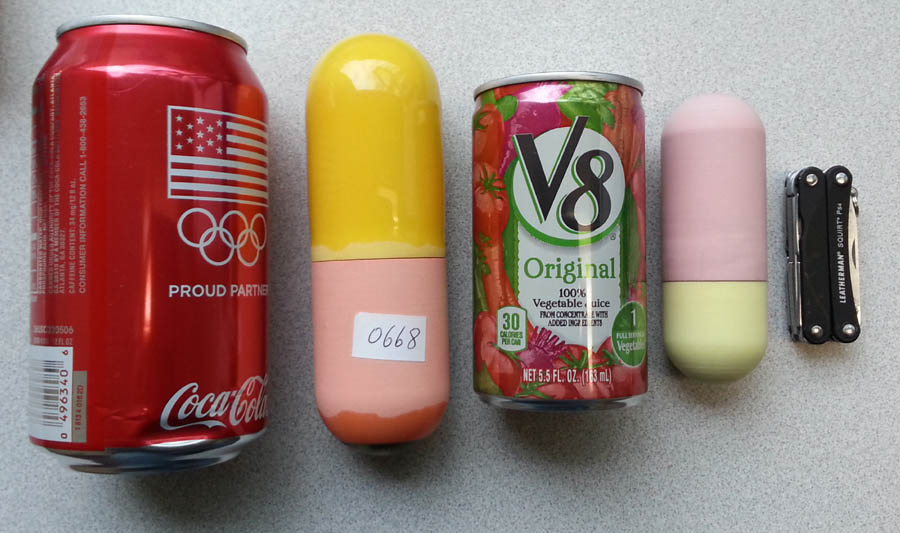Life History Transmitter Tags: LHX2
In 2014, Dr. Horning (then at Oregon State University) and Dr. Roger Hill of Wildlife
Computers completed the developing the next generation of Life History Transmitter known as LHX2 with funding from the National
Science Foundation. Since the LHX1 tag is quite large, it can only be
used on very large animals, like the Steller sea lion, the largest of
all the sea lions. The LHX2 tag has less than one-half the volume of the
LHX1 tag for research use in smaller marine animals such as fur seals
and sea otters.
One of the important questions for better understanding of animal populations is how many animals are born. LHX2 will give scientists this answer by looking at subtle changes in temperature that happen while the animal is pregnant and gives birth. For each female sea lion that is released with implanted LHX2 tags, the scientists will eventually learn at what age she had her first pup and how many pups she had over her entire life. Once researchers get enough data from a sufficient number of females in the project, they can estimate overall birth rates for the population. Birth rates are an important part of the equation in determining why certain populations are not recovering.
We are constantly working on improving LHX tag design. In 2014, we started developing and testing new sensors and data processing algorithms for LHX2 tags, under funding from the North Pacific Research Board. One of these developments centered around adding a coating to the surface of LHX tags, that is doped with a pH sensitive dye. LHX2 tags already incorporate two separate LEDs - one red and one green - and a broad spectrum light sensor. With these, the tags can measure how light absorption is changed at two different wavelengths: 640nm for red and 500nm for green. The dye we used for this new sensor development is
bromocresol green.
This dye is blue at neutral pH values around 7, which is what tags are exposed to while implanted in a live animal. However, when tags are swallowed by a predator they are exposed to stomach acids at much lower pH values from 1.5 to 4. This will turn the dye from blue to green and then yellow. What effect does this have on the light intensity the tags measure with the red and green LEDs, respectively? As it turns out, 640nm (red) is the wavelength at which absorption of bromocresol green changes the most with changing pH. However, at 505nm (green) the absorption does not change at all with pH. This wavelength is called the
isosbestic point.
LHX tags measure at both wavelengths. Specifically, the absorption at 640nm decreases with a declining pH, and at 500nm it hardly changes with pH (it slightly increases). We measure at 500nm (with the green LED) so we can find out if there are changes NOT related to a changing pH, for example the dye leaching out or gradually fading over the years. Even if that happens, we would expect to see a change in the difference in absorption as the pH drops for an ingested tag. Therefore, LHX tags can now detect when they have been swallowed by a predator, how cool is that?
Under this same NPRB research grant, we also started developing ways we can use data from tri-axial
accelerometers
built into LHX tags to distinguish predators, based on the type and duration of different motion patterns sensed by the tag during an attack. The idea is that an attack by a killer whale, as one example, is more likely to happen at the surface, with a greater amount of forceful interaction (for example tail slapping) and will take longer. A shark attack may be more likely to happen underwater where violent motion is dampened, all will be over much more quickly.
LHX2 Specifications :
Size: 32mm diameter (1.25 inches), 96mm length (3.8 inches)
Weight: 54grams or 1.9 ounces (US)
Batteries: One Lithium primary cell, lifespan greater than 10 years
Transmitter: ARGOS compatible UHF transmitter operating at up to ½ watt, capable of
approx. 12,000 transmissions after 10 years............
Internal memory: 16 MB non-volatile
Sensors Detect:
- Temperature
- Light
- Surrounding medium
- Additional specialized sensors under development
Advanced algorithms (computer calculations) to detect mortality, predation and reproductive events from sensor data
Outer covering: Resin-glass composite
Pressure rating: Can withstand a 2,000m water-column depth
The image below shows an LHX1 tag in between a coke can (to left) and V8 can (middle). To the right of the V8 can is an LHX2 tag prototype.
